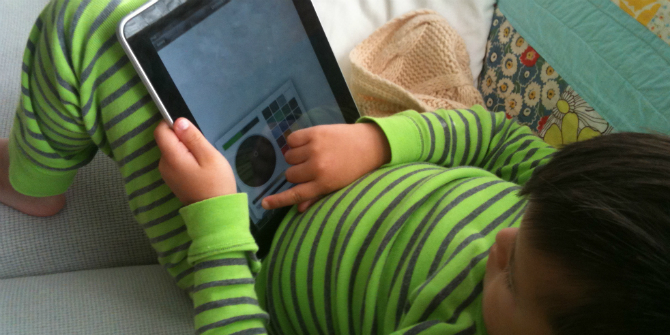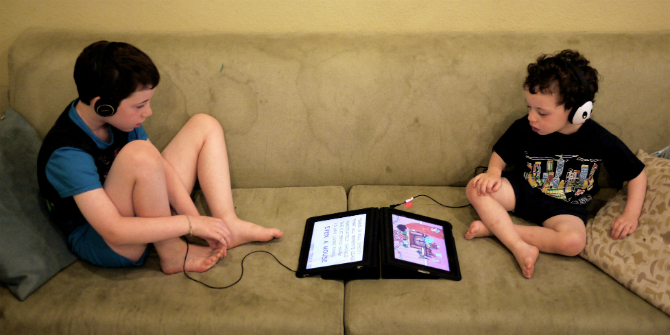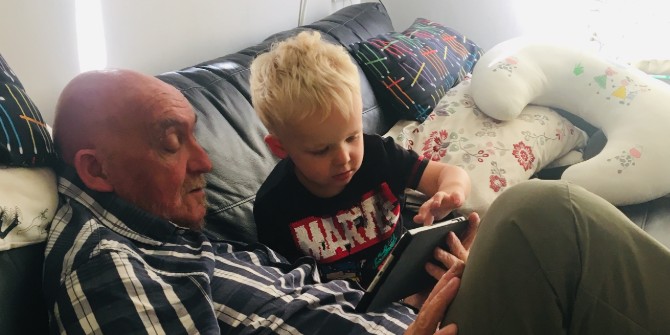 A new report on US teens reveals that social media use can improve social-emotional well-being and support creativity but that vulnerable teenagers may rely more on such platforms. African-Americans also report more harm online, and low-income youth use social media in different ways. Mizuko (Mimi) Ito is a cultural anthropologist, studying youth new media practices in the US and Japan. She oversees research activities of the Digital Media and Learning Hub and is developing a research area focused on interest-driven learning. She is a Professor in Residence at the UC Humanities Research Institute, and has appointments at the Department of Informatics and the Department of Anthropology, and is the John D. and Catherine T. MacArthur Foundation Chair in Digital Media and Learning at UC Irvine. [Cover image credit: Pixabay on Pexels.jpg]
A new report on US teens reveals that social media use can improve social-emotional well-being and support creativity but that vulnerable teenagers may rely more on such platforms. African-Americans also report more harm online, and low-income youth use social media in different ways. Mizuko (Mimi) Ito is a cultural anthropologist, studying youth new media practices in the US and Japan. She oversees research activities of the Digital Media and Learning Hub and is developing a research area focused on interest-driven learning. She is a Professor in Residence at the UC Humanities Research Institute, and has appointments at the Department of Informatics and the Department of Anthropology, and is the John D. and Catherine T. MacArthur Foundation Chair in Digital Media and Learning at UC Irvine. [Cover image credit: Pixabay on Pexels.jpg]
In September, Common Sense Media released its report, Social Media, Social Life: Teens Reveal Their Experiences. The report describes research conducted by veteran digital youth researcher Victoria Rideout and Common Sense Media’s Senior Director of Research, Michael Robb.
“This survey is the organisation’s second report tracking social media use among American teenagers – the original report of the same name was published in 2012 – and offers a revealing look at teens’ social media use over the last six years and how much it has come to dominate their lives.”
Here are a few highlights for the Connected Learning Alliance.
Digital youth
Social media supports meaningful conversations and creative expression
The big finding is the big rise in social media use in tandem with smartphone adoption. 73% of teens report daily engagement, up from 51% in 2012. Social media goes beyond mundane day-to-day updates for a significant minority of teens. 33% say that they have “meaningful conversations” and 27% say that social media are “extremely” or “very” important avenues for creative expression. Importantly, the most social and emotionally vulnerable teens are more likely (37%) to value creative expression through social media.
Digital equity
Low income teens have unique patterns of usage
A mere 3% difference in smartphone ownership divides higher and lower income teens. Before you conclude that the digital device divide has evaporated, consider these numbers. Lower income teens prefer Facebook to Snapchat, unlike higher income peers where Snapchat is #1. African American and Hispanic teens also lean a bit more towards Facebook than their white peers. We’ve noted that when a peer group includes teens who don’t have access to unlimited data on a smartphone, Facebook and texting are the common denominators. This digital participation gap seems to be persisting.
Digital citizenship
Social media mirrors offline happenings
74% of teens say that social media helps them be more aware of current events, which hasn’t changed much since the 2012 survey. On the question of hate speech online, there was an uptick in exposure to across the board, but particularly for racist content, with African-American teens most likely to report exposure.
Digital wellness
Social media can support teen well-being
One of most striking findings is that most teens say social media helps support social-emotional well-being, boosting confidence, and alleviating anxiety, loneliness, and depression. These positives are reported at higher rates than in 2012, so seems to rise with growing social media use. In both 2018 and 2012, teens who are high social media users look pretty much the same as teens who are low social media users in terms of overall social-emotional well-being. One group does stand out. Teens with the lowest social-emotional well-being are much more likely to rely on social media for connection and validation from their peers.
Digital parenting
Just as distracted as their kids
We need to remember that it’s not just teens who have become avid users of social media, but older folks as well. When Common Sense surveyed parents, they found their level of media engagement was similar to their kids. A quarter of teens surveyed said their parents are addicted to digital devices, and a third wish their parents were less occupied with their screens.
Connected learning takeaways
Value the creative and social-emotional upsides, especially for vulnerable teens
The survey suggests that connected educators and parents should value and leverage the creative, relational, and emotional upsides of social media while attending to pervasive problems such as distraction and hate speech.
In particular, we should pay particular attention to the experiences of vulnerable and marginalised teens to maximise the positives and minimise the negatives.
- Teens who are socially vulnerable have the most to gain from meaningful online relationships and creative expression. Targeted programming and outreach to these kids could have outsized impact.
- Minority youth are encountering racist content at unacceptably higher rates. More needs to be done to combat this.
- We need to better understand how low-income youth are experiencing social media in ways different from their wealthier peers. Programs and tools should be tailored to their unique needs and practices so they can fully reap the benefits of social media.
See the infographic, and download the full report from Common Sense.
Notes
This text was originally published on the Connected Learning Alliance website and has been re-posted with permission.
This post represents the views of the author and not those of the LSE Parenting for a Digital Future blog nor of the London School of Economics and Political Science.





